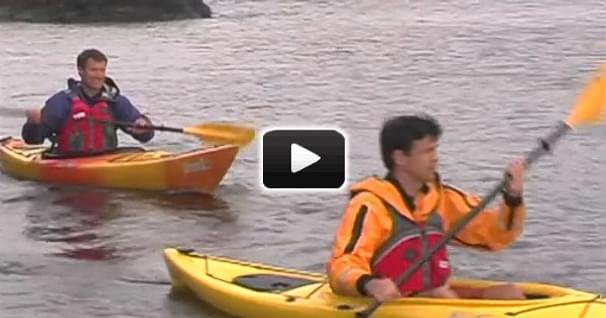Paddling a Tandem Canoe
For many people, paddling is all about the quiet, stress-free calm that comes with heading out alone and under your own power. Think about it: taking the boat out for an early-morning trip across a glassy, mist-covered lake; sliding silently alone with your thoughts. It's one of the most sublime experiences in paddling.
But, add a second person to the mix, and that everyday excursion takes on a whole new aspect: teamwork. Now imagine gliding across that water in perfect sync; making complex four-handed maneuvers on a dime, and sharing the unique partnership that only tandem paddlers can understand.
Trouble is, most paddling partnership are far from ideal (and I can speak from personal experience that stationing a brother and a sister in the bow and stern of a canoe is just asking for trouble). What starts off as a fun afternoon often devolves into a constant struggle between two paddlers, resulting in a wobbly, scattershot ride that leaves both parties irritated and unhappy. That also means that the advantages of tandem paddling (more power, more speed, less work for each member of the team) are wasted on inexperience and ill preparation.
~Get the BWCAW Tee~
With over 1,090,000 acres of wilderness area, the BWCAW is a paddler's paradise.
Fortunately, there are ways to turn even a novice paddler into a calm, successful tandem partner. From outlining the specific duties of each member of a paddling due, to exploring the unique challenges of a tandem boat, these tips will help you maximize your time on the water, while minimizing common and easy-to-overcome problems.
Cadence: There's a reason that soldiers are taught to march in time: the cadence, or rhythm, helps the group move and function as one; maximizing their impact and streamlining their efforts. The same principle applies to successful tandem paddling. Both members of the team need to work as one, and cadence is a big part of that. When the bow and the stern and pulling at the same time, the boat will run straight, but if the stern loses the cadence and starts paddling faster than the bow, you'll start to spin out and drift off course. Obviously, as the front paddler cannot see what's going on behind them, it's their responsibility to establish an acceptable paddling cadence for the boat: fast enough to keep the ship of state moving, but not so fast as to interrupt the stern's steering duties. As long as both parties agree on the pace, you should be fine.
Know your role: As a general rule, the paddler in the stern of the boat does the steering. Usually, that means that the more experienced paddler sits in back, while the other does the grunt work up front. Beyond that, however, it's the responsibility of the forward member of the team to set the cadence, scout upcoming obstacles, and help pull the boat through the water.
Opposite sides: The importance of paddling on opposite sides of the boat (bow on the left side, stern on the right, for example) is the first things many tandem paddlers learn. This, coupled with a proper paddling cadence, will all but guarantee that the boat tracks straight through the water with little need for correction. As with cadence, the paddle side is set by the bow paddler, who should occasionally switch sides to reduce fatigue.
Communication: As with any partnership, communication is the difference between a successful effort and a day of tiny power struggles and petty bickering. Is the bow setting the cadence too fast? Say something. Is the stern leading the boat somewhere that you don't think it needs to go? Speak up. This is especially important on river trips, as the bow paddler is often the first to see upcoming rapids and obstacles. Communicate their position to the rear paddler so that they can guide the canoe through the safest passage.
Practice: It doesn't matter is you've known your paddling partner for 25 years or 25 minutes, an on-water team doesn't develop overnight. You'll be amazed what a few hours of tandem practice before your trip will do for your paddling skills. And it doesn't take much effort. Just paddle around on some flat water, get to know each other's quirks, and you'll be surprised how quickly you develop a cadence and paddling style that you can both live with.
Related Articles
As the days get shorter and the weather gets colder, it becomes harder to get out and paddle and easier…
A wet exit is a mandatory skill for any modern day kayaker to learn. As an instructor it is one of the…
I'm sure you'll be happy to hear that kayaking is a remarkably safe sport. In fact, compared to most…
Hi, I'm Robert Stehlik with Blue Planet Surf. I wanted to talk a little bit about moving around on the…




